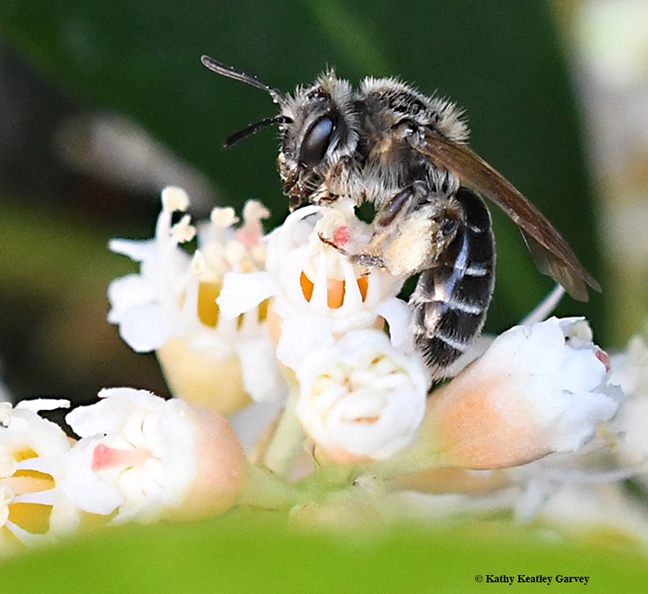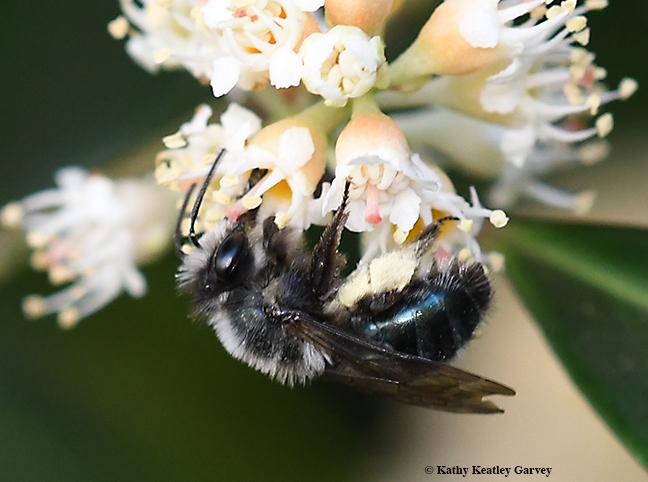Have you checked to see what's foraging on your early spring blooms?
Our cherry laurels (Prunus laurocerasus) are blooming and the Andrena (mining) bees are zooming. These fast-moving bees are solitary ground-nesting bees that are early spring bees, according to native pollinator specialist Robbin Thorp, distinguished emeritus professor of entomology at UC Davis. The males emerge first.
"Females emerge several days later and, with only a few short weeks to live, waste no time with polite introductions," write and Thorp (who received his doctorate in entomology from UC Berkeley) and UC Berkeley professor Gordon Frankie in California Bees and Blooms: A Guide for Gardeners and Naturalists. The book is also co-authored by UC Berkeley affiliates: entomologist/photographer Rollin E. Coville and botany specialist Barbara Ertter.
"Mating is first on their agenda, followed by a quick meal of pollen to build up their ovaries," Thorp and Frankie point out. "They then dig or forage for materials to construct their nests, and for food for their offspring. At the end of the short flight season, the adults die and the new generation's life cycle continues inside the nest."
Thorp identified the bees below as two females: Andrena candida and A. nigrocaerulea. He and several colleagues teach The Bee Course, "an annual workshop for conservation biologists, pollination ecologists and other biologists who want to gain greater knowledge of the systematics and biology of bees." It's held at the Southwestern Research Station, Portal, Ariz., and this year's dates are Aug. 21-Aug. 31.
"Most North American Andrena species are black, dull metallic blue, or green and moderately hairy, with bands of pale hair on their abdomens," according to the Xerces Society for Invertebrate Conservation. "Females have large, velvety facial depressions (foveae) that look like eyebrows and large pollen-collecting hairs (scopae) on the upper part of their hind legs, seemingly in their 'armpits.' Despite a variety of striking colorations, Andrenan species are difficult to tell part."
If you have sandy soil and shrubs, that's ideal for them. You'll be the landlord and they'll be your tenants. "They nest in the ground, typically in sandy soil and often near or under shrubs. The nest entrance is usually marked by a small mound (tumulus) of soil."--Xerces Society.
Andrena is the largest genus in the family Andrenidae, with more than 1300 species, and about 261 in California. They occur nearly worldwide (Americas, Eurasia and the Old World tropics). The tiniest of the Andrena are only 7 millimeters long.
You may not see them. They're as tiny as they are fast, and they don't stop for photographs!
Sometimes you get lucky...
Attached Images:

